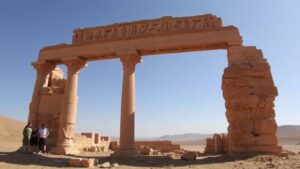Searching for the “City of Giants” described in Indigenous legends of Ecuador’s Amazon basin.
Searching for the City of Giants in Ecuador’s Amazon Basin
The City of Giants, a legendary place described in the folklore of various indigenous tribes in Ecuadors Amazon basin, has long ignited the imagination of explorers, historians, and archaeologists. This mythical city is said to be home to enormous inhabitants and is often associated with lost civilizations and treasures. In this article, we delve into the origins of the legend, contemporary explorations, and the significance of this mythical place in indigenous culture.
The Origins of the Legend
The tale of the City of Giants is woven into the cultural fabric of several indigenous groups, including the Kichwa and Shuar. e stories often describe a grand city constructed by giants, featuring towering structures that could touch the sky and bountiful resources that attracted outsiders. These narratives serve not only as cautionary tales about greed and the consequences of disturbing the natural order but also reflect deep spiritual beliefs rooted in the land and its history.
Anthropological studies suggest that the giants symbolize a connection between humanity and nature, representing the powerful forces that govern the rainforest. Much like the myth of Atlantis, the City of Giants embodies a lost world, a place that may have thrived under conditions long ago forgotten.
Archaeological Context
Despite the elusive nature of the City of Giants, archaeological evidence in Ecuador’s Amazon basin has shown that ancient civilizations existed in the area. Excavations have uncovered remnants of advanced societies that practiced agriculture and constructed elaborate communal structures.
For example, the pre-Columbian cultures of the region, including the Mayo Chinchipe and Cañari civilizations, developed sophisticated agricultural techniques and established trade networks by 500 CE, as evidenced by various artifacts such as pottery and tools. While none of these findings directly point to the City of Giants, they indicate that the Amazon was home to complex societies.
Modern Day Exploration
The quest to find the City of Giants has attracted numerous explorers and researchers, especially in recent decades. One notable figure is the Venezuelan explorer, Francisco de Orellana, who, in the 16th century, became one of the first Europeans to navigate the Amazon River. Orellana’s accounts fueled speculation about immense cities filled with gold and riches, provoking numerous expeditions into the inhospitable jungle.
In modern times, the use of technology like LiDAR (Light Detection and Ranging) has revolutionized archaeological exploration. LiDAR mapping has revealed large geometric structures hidden beneath dense vegetation, particularly in parts of Ecuador and surrounding countries. These discoveries suggest that ancient civilizations once thrived in areas thought to be uninhabited, reigniting interest in the fabled City of Giants.
The Indigenous Perspective
It is essential to acknowledge the views and rights of the indigenous communities that hold the City of Giants legend as a significant part of their cultural heritage. For these groups, the land is not merely a backdrop for legends but an integral aspect of their identity and spirituality. Preservation of their traditions, languages, and rights to land is crucial in the face of ongoing deforestation and resource exploitation.
- The Shuar people emphasize the importance of maintaining the balance between nature and human existence.
- The Kichwa celebrate their ancestors through storytelling, linking their past and present to the land.
Such connections illuminate the broader implications of exploring for the City of Giants, raising ethical considerations surrounding cultural sensitivity and the representation of indigenous narratives. It is crucial for researchers and adventurers to engage with local communities and respect their interpretation of these legends.
Actionable Takeaways
As the search for the City of Giants continues, several important lessons emerge:
- Understanding indigenous legends can foster a greater appreciation of the cultural significance of the Amazon basin.
- Modern technology can aid in revealing the hidden history of the region but must be used responsibly and ethically.
- Collaboration with indigenous communities is vital to ensure that their perspectives and rights are respected in any explorative endeavors.
The City of Giants remains a tantalizing enigma, a symbol of the rich tapestry of human history embedded in the Amazon rainforest. As exploration evolves and our understanding deepens, the intersection of myth, culture, and history will continue to captivate those who seek to uncover the truths behind these ancient stories.



